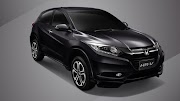Toyota HiAce
The Toyota HiAce (Japanese: トヨタ・ハイエース, Toyota Haiēsu) (pronounced as "High Ace") is a light commercial van produced by the Japanese automobile manufacturer Toyota. First launched in October 1967, the HiAce has since been available in a wide range of body configurations, including a minivan/MPV, minibus, panel van, crew van, pickup truck, taxi and an ambulance. In Japan, the HiAce is exclusive to Toyopet Store locations.
Overview
Manufacturer
Toyota
Production
October 1967 – present[1]
Body and chassis
Class
Light commercial vehicle
Minivan
Body style
Pickup truck (1967–1995)
Van
Minibus
Platform
H-series
First generation (H10) Edit
First generation (H10)
1975 Toyota Hiace H10 camper van.jpg
Toyota HiAce camper van
Overview
Production
October 1967 – January 1977[1]
Assembly
Japan: Hamura, Tokyo (Hino Motors)[2]
Japan: Kariya, Aichi (Toyota Auto Body)[2]
Japan: Toyota, Aichi (Honsha plant)[3]
Body and chassis
Body style
2-door pickup
4/5-door van
Layout
Front-engine, rear-wheel-drive
Related
Toyota ToyoAce
Powertrain
Engine
1.3 L (1,345 cc) 3P I4 (PH10)[4]
1.5 L (1,490 cc) 2R I4 (RH10)
1.6 L (1,587 cc) 12R I4[5] (RH11/13/16)
1.8 L (1,808 cc) 16R I4 (RH12/14/17)
Transmission
4-speed manual
Dimensions
Wheelbase
2,350 mm (93 in)
Length
4,305 mm (169.5 in)
Width
1,690 mm (67 in)
Height
1,890 mm (74 in)
Curb weight
1,130 kg (2,490 lb)
Toyota HiAce First generation
In the late 1960s, Toyota Auto Body, a Toyota subcontracting company, led the development of the HiAce as a small van with a one-box design, similar to European ones at the time, but, according to former Toyota senior employee Akira Kawahara, something unseen in the Japanese industry.
Introduced in 1967, the HiAce was offered as a cab over pick-up, delivery van, and a stretched commuter vehicle. It was also called the HiAce Commercial in camper van configuration. It was brought to market two years after the introduction of the Nissan Homy, acquired by Nissan when they assumed operations of the Prince Motor Company. A few engines of different sizes were available upon introduction, ranging from the 70 PS (51 kW) 1.35 to a 83 PS (61 kW) 1.6-liter version.[4][5] In 1975, the 1.8-litre 16R engine was added. The HiAce was available with a heater, considered a luxury item at the time.
The HiAce was primarily designed as a commuter vehicle, able to transport up to 8 people. With this goal in consideration, the HiAce exterior dimensions and engine displacement were in compliance with Japanese Government regulations so as to encourage sales, and accommodate the most passengers by utilizing a cabover body style, with the engine installed underneath and between the front passengers. It was a smaller alternative to the larger Toyota Coaster minibus, and was introduced to Japan after the 1950 Volkswagen Transporter, and the 1961 Chevrolet Greenbrier cabover vans. It was introduced in the same year as the much smaller Toyota MiniAce, which was based on the Toyota Publica, a predecessor to the Toyota Corolla.












0 Comments